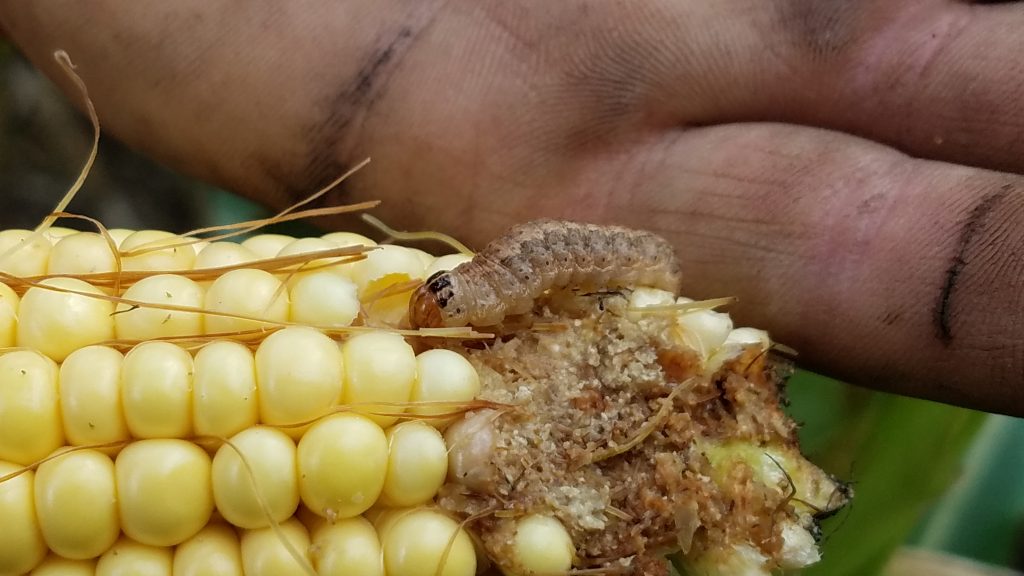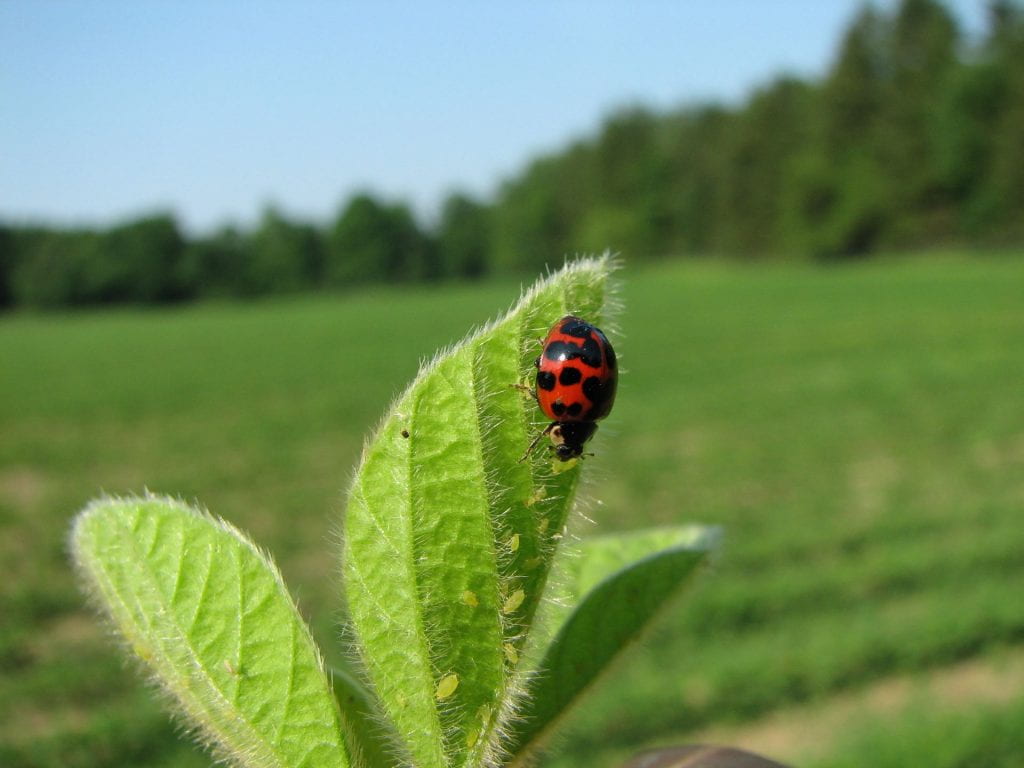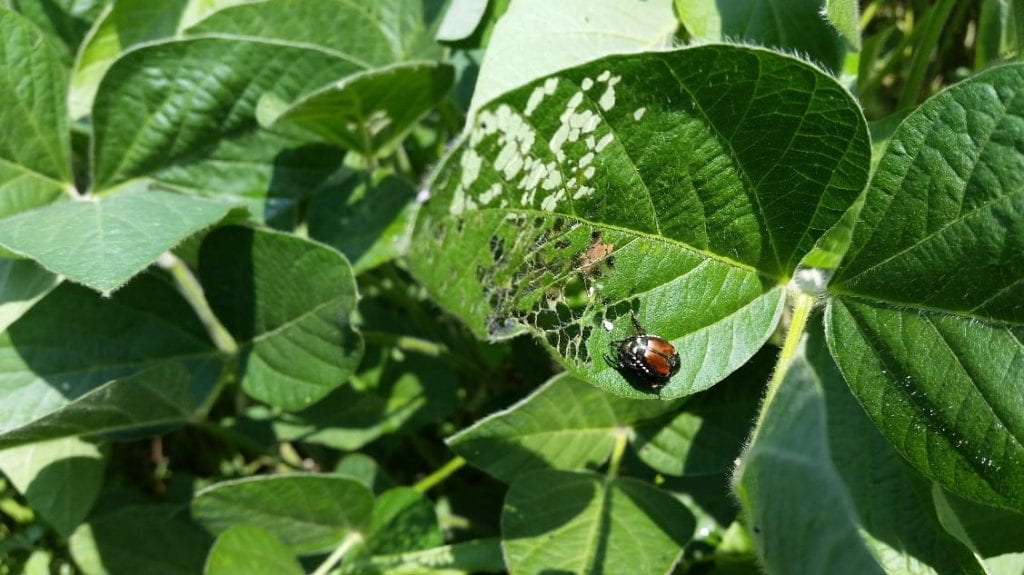Volume 19 Number 16
Contents
View From the Field
Western Bean Cutworm
The peak flight for western bean cutworm (WBC) was the week of July 27. The following table indicates the average total moths caught per trap weekly by year.
Most of the WBC moths caught were in Northern NY. The following graph shows the difference between Northern NY and the rest of the state for WBC flight captures. The rest of the state’s peak flight was a week earlier than Northern NY.
Comparing Northern NY and the rest of the state weekly trap averages from 2010 to 2020 the risk of WBC damaging field corn is much higher in Northern NY than the rest of the state.
This year we have an average of 477 moths caught per trap. This is the lowest average number of moths caught per trap since 2016.
| Total moths | Number of Traps | Ave/Trap | |
| 2010 | 739 | 57 | 12.96491 |
| 2011 | 1528 | 66 | 23.15152 |
| 2012 | 3270 | 69 | 47.3913 |
| 2013 | 5156 | 54 | 95.48148 |
| 2014 | 9903 | 66 | 150.0455 |
| 2015 | 19476 | 101 | 192.8317 |
| 2016 | 17450 | 63 | 276.9841 |
| 2017 | 29573 | 52 | 568.7115 |
| 2018 | 33560 | 70 | 479.4286 |
| 2019 | 35538 | 67 | 530.4179 |
| 2019 | 35538 | 67 | 530.4179 |
| 2020 | 30051 | 63 | 477 |
When looking for damage check the ears of corn on the plant. The following photo is what WBC larvae looks like in the ear of corn.
Grasshoppers
There are reports of high levels of grasshoppers. Most species of grasshopper prefer feeding on pasture, small grains and hay grasses, but will feed on corn and soybeans. For more information on grasshoppers in pasture and hay fields please refer to the following website: https://extensionpublications.unl.edu/assets/pdf/g1630.pdf
Soybean Aphids
Soybean aphids remain at low populations in soybean fields. We are seeing many predators like lady beetles and lacewing larvae in soybeans. This natural biological control is most likely keeping the aphids at lower levels in soybean fields.
Armyworm
For the second week in a row, we had a report of armyworm infestations in sorghum-Sudan grass in Northern NY. In this case, the armyworm infestations were at moderate to high levels. In one case, the pest destroyed the field.
Photo by Dr. Kitty O’Neil-CCE Northern NY
Spider mites and Japanese beetles
Spider mites and Japanese beetles continue to be at low levels in soybeans. These should continue to decline as we approach late summer.
Corn diseases
We had reports of two diseases in corn this week
Gray Leaf Spot at low levels in Dutchess County.
Northern Corn Leaf Blight in Ulster and Allegany Counties
Soybean diseases
There were several soybean diseases were reported this week in NY at low levels.
- Bacterial pustule
- Septoria brown spot
- Downy Mildew
- Frogeye Leaf Spot
- Brown Stem Rot
- Northern Stem Canker
- Phytophthora Root Rot
Be Ready for Stored Grain Insect Pests
Corn and soybean harvest will be underway soon. These grains will be stored in on-farm bins. There are some important factors to consider. Many insect pests like rice weevil, maize weevil, granary weevil, lesser grain borer and Indian meal moth can still be in the bins even when you think it might be empty. The majority of the insect pests I have seen while monitoring stored grain bins have been weevils. Here are a few steps to help limit these pests from infesting your new grain:
- Cleaning, cleaning and more cleaning. Make sure to get all the old grain out of the bin. Remove the grain from under the floorboards. I know it is a pain but this can be a reservoir for these insect pests. It does not take many of these insects to re-infest and proliferate. This is by far the most important step in the process.
- Make sure to seal up holes, cracks and openings in the bin. Openings in the bin is a good way for some of these insect pests to enter.
- You can treat the inside of the bin with an insecticide to kill the remaining insect pests. If you were unable to clean under the floorboards, it might be a good idea to treat this area.
- Clean the grain before placing it into the bin.
- Make sure not to store new grain on top of the previous year’s grain. This is a very easy way to have the insect pest infest the new grain.
- If possible, cool grain down below 50 degrees. This limits insect development.
- Make sure to dry the grain down to limit available moisture.
- Make sure the grain is distributed uniformly within the bin.
Here is a list of insecticides that are registered for stored grains in New York.
Clipboard Checklist
Keith Waldron, NYS IPM
General
*Walk fields to check general field condition, weed, vertebrate and other issues
*Watch for crop maturity, stand assessments, weed escapes, nutrient deficiencies, lodging issues
*Update crop records and field history
Alfalfa:
*Monitor potato leafhopper, foliar, systemic and crown rot diseases, signs of alfalfa snout beetle (in counties where ASB has been confirmed).
*Monitor new seedings for potato leafhopper, pythium blight, phytopthora root rot.
*Evaluate established legume stands for health, productivity and potential rotation. Days until harvest
Small Grains:
*Plant winter small grains after the Hessian Fly Free Date.
*Monitor small grain seedings for stand counts, establishment issues
Corn:
*Monitor late-season corn pests including European corn borer, corn rootworm, western bean cutworm, slugs, foliar diseases such as northern corn leaf blight and gray leaf spot, ear molds, stalk strength/lodging potential, weed issues, nutrient deficiencies, vertebrate damage.
Soybeans:
*Monitor for growth stage, soybean aphid, defoliators, foliar diseases, white mold, weed issues, vertebrate damage
*Record diseases present, location and types of weed escapes
Pastures:
*Check water sources, mend fences as needed.
*Check crop growth, clip pastures between grazing as needed
*Monitor for invasive species, plants harmful to livestock
*Review/Plan rotations
Storage:
*Check stored grain bins for temperature, moisture and signs of mold and insects. Aerate, core, transfer grain or treat as necessary
*Clean and disinfect empty storage bins in preparation for grain harvest
*Mow around storage bins and facility to minimize pest hiding places
Dairy Cattle Barn Fly Management:
*Expect an increase in fly numbers in barns as flies seek warmer habitats to escape cooler outside temperatures.
*Monitor animals and barn area for house fly, stable fly and other pest management needs including presence of rodents and birds.
*Check facilities for favorable fly breeding conditions: (organic matter + moisture): leaks in watering systems, roof gutters for leaks and potential overspill, drainage,
*Sanitation, sanitation, sanitation – clean animal resting areas, feed troughs, minimize source of moist organic matter i.e. fly breeding areas in barn and in adjacent animal loafing yard
* Continue fly monitoring: install “3X5″ index card fly speck monitoring cards throughout barn
*Use, replenish, replace fly management materials: sticky fly tapes/ribbons, insecticide baits, natural enemies (parasitoids), fly population monitoring (3 x 5) spot cards
Dairy Cattle on Pasture:
*Monitor animals for presence of face flies, horn flies and stable flies. Action guidelines: face flies (average 10 per animal face), horn flies (average 50 / dairy per animal side, 200 / beef cattle per animal side), stable flies average 10 per animal (all four legs)
*Check feed bunk / water source locations for signs of stable fly breeding (moist undisturbed organic matter – spilled feed, round bales, etc.), minimize source of moist organic matter i.e. fly breeding areas in barn and in adjacent animal exercise yard.
*Check pasture for forage quality / quantity, rotate as appropriate
*Check pasture for vegetation poisonous to livestock
*Consider use of pasture fly traps to help reduce deer, horse and stable fly populations
*Plan to remove insecticide ear tags in fall to reduce risk of developing insecticide resistance








